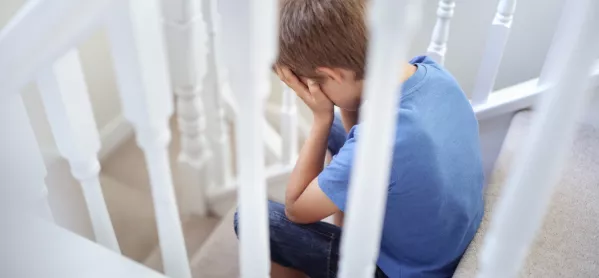- Home
- Why we’re sitting on a child wellbeing time bomb
Why we’re sitting on a child wellbeing time bomb

£105 billion. That’s the current size of the UK’s fiscal response to this once-in-a-generation crisis. Close to 5 per cent of GDP.
This has included £42 billion for the job retention scheme, £15 billion for small business grants and £13 billion in tax holidays for the industries hardest hit by lockdowns.
Meanwhile, all schools in the UK will collectively receive £650 million - for one-to-one or small group tuition throughout the 2020-21 academic year.
This amounts to £80 per pupil to help children catch up on months of missed classroom learning.
An additional £350 million has been allocated to scale up and subsidise private tuition for disadvantaged pupils.
It is, as yet, unclear how much will be spent on the scaling up versus the subsidy - though we know schools will be required to contribute 25 per cent of the cost in the first year.
Coronavirus: How important is children’s welfare?
It all poses the question: when considered alongside other rescue packages, how “strategically important” does the government consider children’s education and welfare to be?
It is clear the months spent out of school will have a greater impact on disadvantaged children, with recent research suggesting that the existing attainment gap between disadvantaged pupils and their peers could widen by 36 per cent.
Yet, in the absence of further intervention, it appears that the £650 million of “new” funding will be equally distributed amongst schools, irrespective of the demographics of their pupils.
This means that an affluent school with children of professional parents would attract the same amount of money as a school of the same size but where the majority of pupils have been on free school meals for much of their lives.
The glaring gap in children’s wellbeing
A further, glaring gap in the plan is wellbeing: the government has set aside no funding for interventions to support children and young people’s emotional health.
The impact of the pandemic and school closures on children’s health and wellbeing is impossible to quantify precisely, but experts agree it will be extensive and long-lasting.
Young people have missed out on the daily social interaction and stable relationships that schools provide. Many will sadly have also experienced trauma - bereavement, abuse and material deprivation.
Vulnerability has expanded - children not previously identified as requiring support will have experienced challenges during the lockdown that necessitate targeted intervention.
More will need access to educational psychologists, counsellors and other support workers.
Empty claims
While the government’s published guidance for reopening schools acknowledges these facts, recommendations for what schools should actually do ring hollow.
Schools are instructed to work with educational psychologists and nurses, and “draw on external support” for children who require specialist help.
Yet the workforce and services supporting vulnerable children have been in crisis mode for years - well before the expansion in need resulting from this crisis.
Since 2010, the number of school nurses has fallen by 30 per cent; nine in 10 local authority principal educational psychologists reported last year they were unable to meet demand.
Family support and non-acute social care services have disappeared in many areas, and child and adolescent mental health services were already failing to meet need.
The government’s lack of funding for summer arts and sport programmes also represents a major missed opportunity to re-engage and support children and mitigate the new and heightened risk of exclusion for the most vulnerable.
Lifelong implications
This is a huge issue - and one that will have lifelong implications for children.
Exposure to sources of toxic stress in childhood can mean the difference between a productive and healthy life and one characterised by chronic mental illness and contact with the criminal justice system.
The impact of this can be huge, with research estimating it costs £1.3 trillion annually across Europe and North America.
While tuition to catch up academically is a well-evidenced approach, something much more fundamental is needed.
Many children will be unable to benefit from academic help without laying the necessary groundwork for learning through remedial wellbeing support.
The ability to retain information, socialise with others and generally function well at school is likely to be severely hampered.
The impact of lockdown
Children entered the lockdown from very different starting points and will have had a range of experiences during their months out of school.
Some will emerge with significant distress and require much more, and longer-lasting, support than others.
The government’s plan ignores this reality.
Sweeping mental health and wellbeing under the rug, while not targeting funds at the pupils who will need the most support, is inequitable and will hasten the divide.
If we truly want to avoid a lost generation of learners, the government must attach the same value and sense of urgency to children and young people’s wellbeing as it does to other sectors.
Whitney Crenna-Jennings is senior researcher at the Education Policy Institute
Keep reading for just £1 per month
You've reached your limit of free articles this month. Subscribe for £1 per month for three months and get:
- Unlimited access to all Tes magazine content
- Exclusive subscriber-only stories
- Award-winning email newsletters


